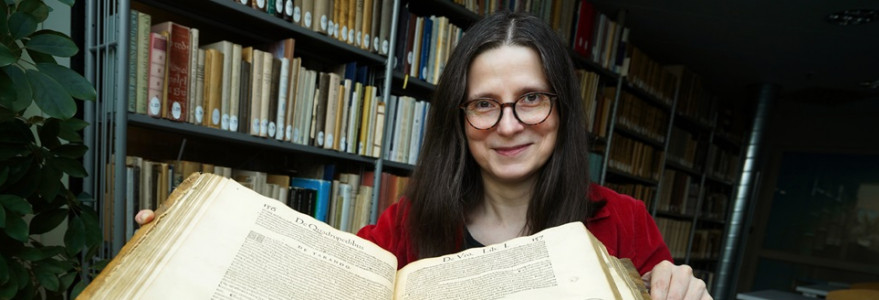Prof. Grażyna Jurkowlaniec from the UW’s Faculty of Culture and Arts is the first Polish female researcher, who received an ERC Advanced Grant.
As part of the SAIGA project, she will analyse the relationship between the research on the fauna of Eastern Europe and the ways in which the region was perceived in the early modern period, i.e. between the 16th and 18th centuries. The five-year project has received funding of €2.5 million and will begin in October 2024. The researchers is the second Pole who is carrying out an Advanced Grant as part of the Social Sciences and Humanities panel and the first woman in the country who received this type of grant.

Ph: prof Grażyna Jurkowlaniec/ University of Warsaw
The project will delve into the understanding of this region using representations of animals typical to Eastern Europe, such as an aurochs, a wisent, an elk, and a saiga antelope, whose Latin name saiga serves as the acronym of the project (Scholars, Animals, Images, Geographies, and the Arts: De-exoticizing Eastern Europe in the Early Modern Period)
Prof. Jurkowlaniec stated on the University of Warsaw’s main webpage that these animals were known to scholars of the 16th-18th centuries mainlythrough accounts of ancient and medieval authors and current reports from local informants, who were not always reliable. The images they provided were reproduced in large numbers, which often did not contribute to the evolution of science but, on the contrary, strengthened errors and misunderstandings.
She expects the research to bring about a reassessment of the early modern concept of Eastern Europe. The innovation of the SAIGA project has three dimensions. Firstly, the researchers will focus on visual and material sources as at least equivalent to written sources. Secondly, they will look for the key to the early modern concept of Eastern Europe in the realm of natural history and not, as before, in intellectual, political, or social history. Thirdly, contrary to the commonly held assumption of a transfer of knowledge mainly from west to east, researchers from the SAIGA project will demonstrate the active role of Eastern Europe in shaping zoological knowledge.
The project integrates several disciplines and research methods: history of science (especially zoology), art history, history of the book, historical geography, philology, and literary studies. To carry it out, it will be necessary to build a team with broad and diverse competences.
The results of the research will be developed in the form of monographs and articles, and presented at an exhibition. The data and their visualisations will be collected in the URUS database developed in collaboration with the Digital Competence Centre, University of Warsaw.
Source:
https://en.uw.edu.pl/zwierzęta-i-koncepcja-europejki-wschodniej/


